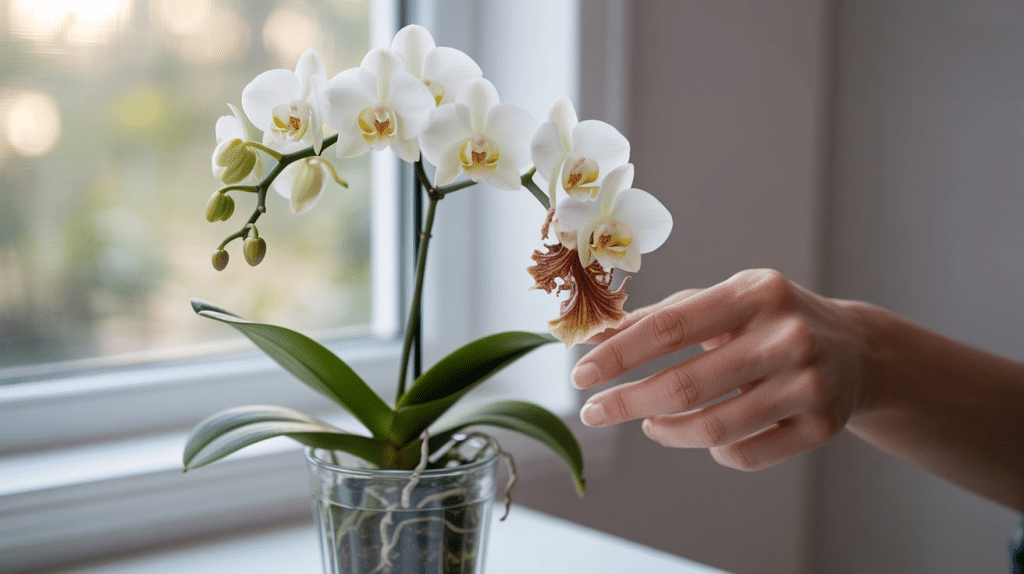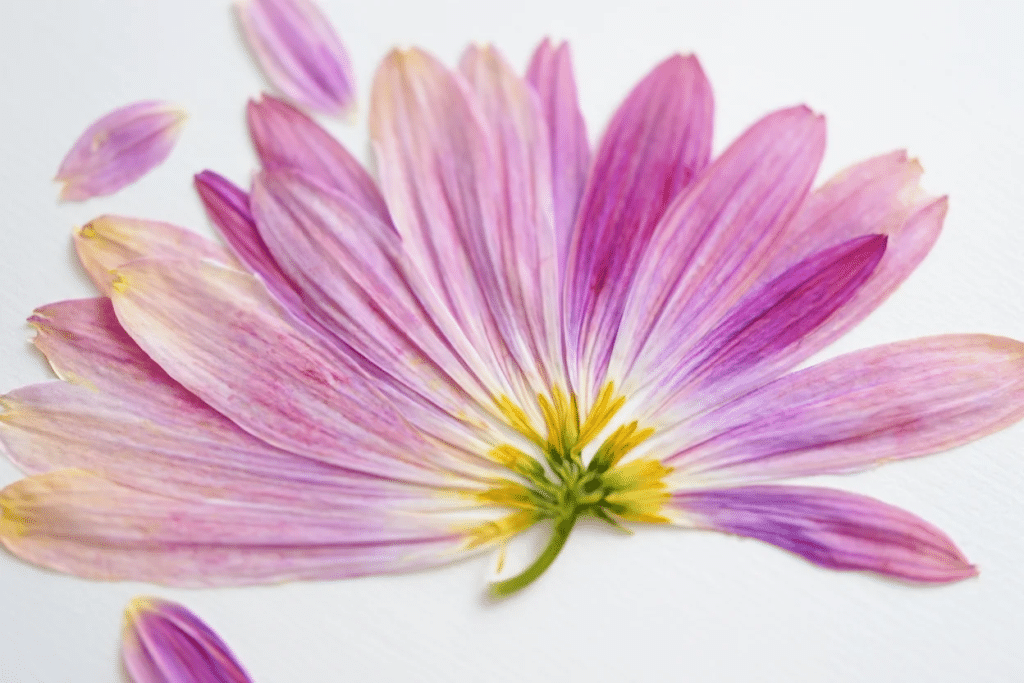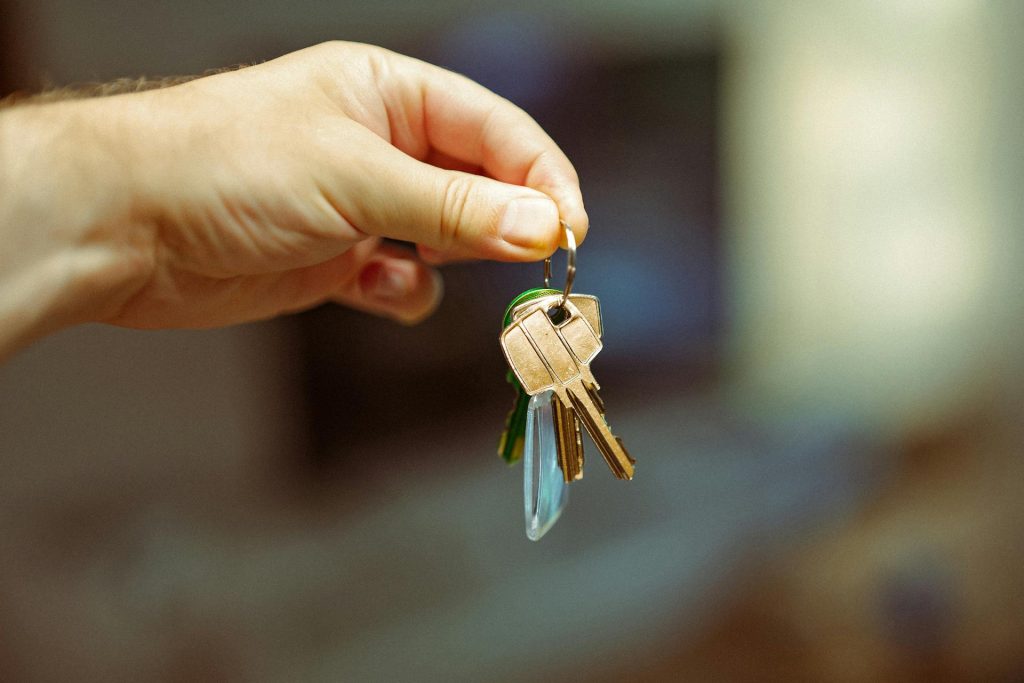Is your orchid stem turning brown, and you’re not sure why? Many plant lovers face this common problem with their prized flowers.
Brown stems on orchids can signal several issues, from watering mistakes to light troubles. When an orchid stem turns brown, it often means your plant needs quick help.
Don’t toss that plant yet! With a few simple steps, you can turn the situation around. In this guide, I’ll show you how to spot the exact cause and save your plant before it’s too late.
Stay with me to learn why this happens and the best ways to bring your orchid back to health.
Understanding Orchid Stem Discoloration
When you notice your orchid stem turning brown, it’s your plant trying to tell you something. This color change isn’t random – it’s a signal from your plant about its health and needs.
Brown stems often happen for a few key reasons.
First of all, I suggest you check your watering habits. Too much water can rot the stems from the inside out, while too little might cause them to dry and turn brown.
Light issues are another common cause. If your orchid sits in direct sunlight, the stems might get sunburned and change color. On the flip side, not enough light can weaken the plant over time. Age also plays a role here. Just like leaves on trees, older stems naturally turn brown after they’ve bloomed. This is normal and not a sign of trouble.
The type of brown matters, too. Soft, mushy brown spots often indicate a water issue, while dry, crispy brown parts might indicate sun damage or a lack of humidity.
By paying attention to these signs, you can figure out exactly why your orchid stem is turning brown and take the right steps to help it.
Common Causes of Orchid Stem Turning Brown
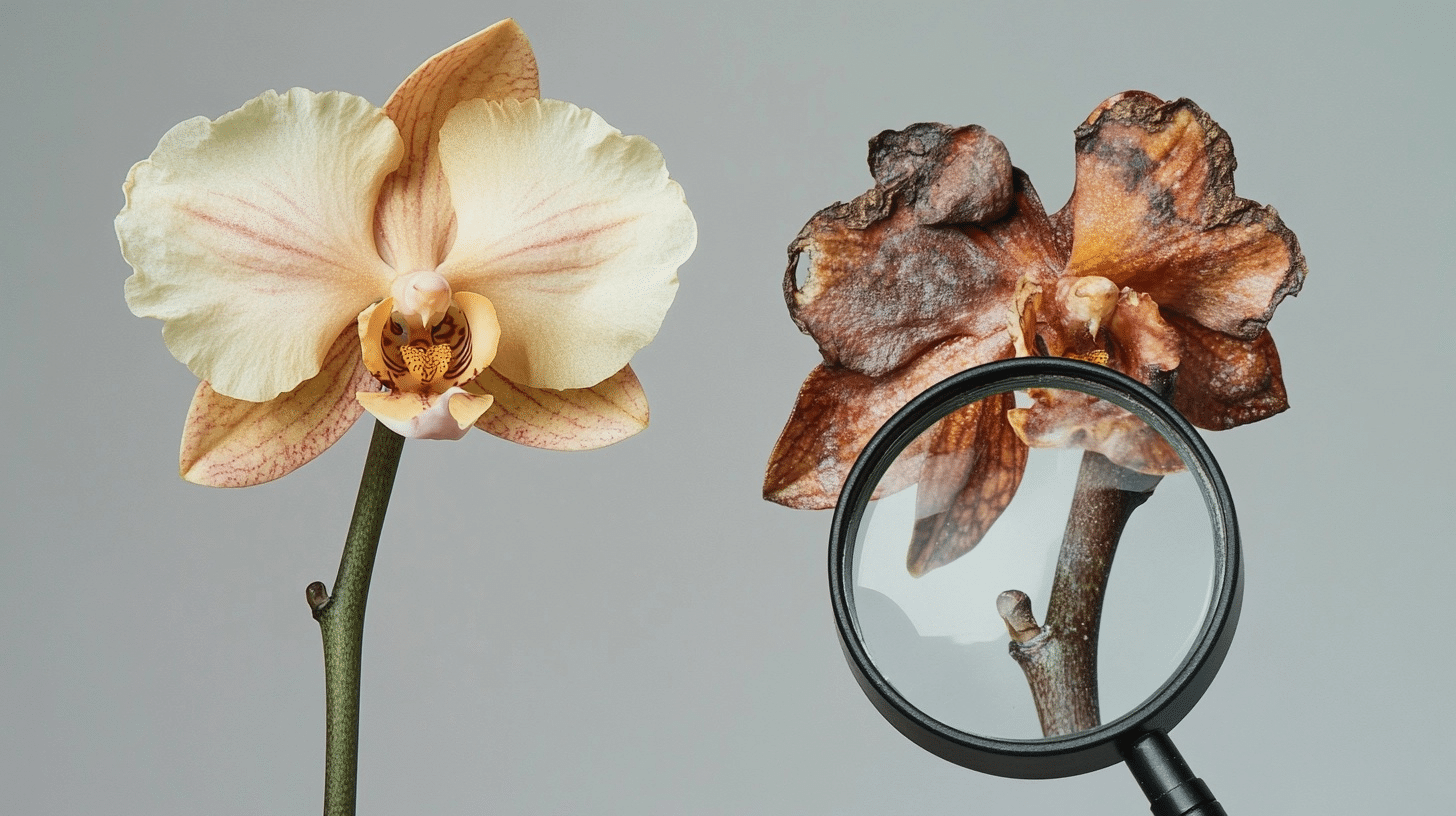
Brown stems on orchids can happen for several reasons. By knowing these causes, you can spot the problem fast and fix it before your plant suffers more.
Here’s what to look for:
- Too much water sitting at the roots
- Not enough water is reaching the stems
- Direct sunlight burns the plant tissue
- Low humidity in your home
- Cold drafts near windows or doors
- Normal aging after the bloom cycle
- Fungal or bacterial infections
- Pest problems are damaging the stem tissue
- Fertilizer burn from too many nutrients
When you figure out which of these is affecting your orchid, you’ll be able to take the right steps to help your plant get better.
Natural Aging vs. Warning Signs: How to Tell the Difference
When your orchid stem turns brown, it’s not always bad news. Sometimes it’s just part of the plant’s life cycle. But how can you tell if it’s normal aging or a cry for help?
The key is in the details of how and where the browning happens.
| Natural Aging Signs | Warning Signs |
|---|---|
| Brown color starts from the base of a stem that has already flowered | Browning begins on the new growth or the middle of stems |
| Color changes slowly over weeks | Stem turns brown quickly (days) |
| Stem feels dry but firm | Stem feels soft, mushy, or hollow |
| Only affects old stems after blooming | Affects multiple stems, including new ones |
| The rest of the plant looks healthy | Other parts show yellow leaves or spots |
| Flowers have already fallen off | Buds drop before opening |
| Browning is even and uniform | Browning has wet-looking patches |
| No unusual smell | Foul or sweet smell present |
| Only the bloom spike turns brown | Roots or leaves also show discoloration |
| New growth still appears elsewhere | The plant stops producing new growth |
| Occurs after a normal bloom cycle | Happens during the active growing phase |
Diagnosing the Problem with Each And Every Step
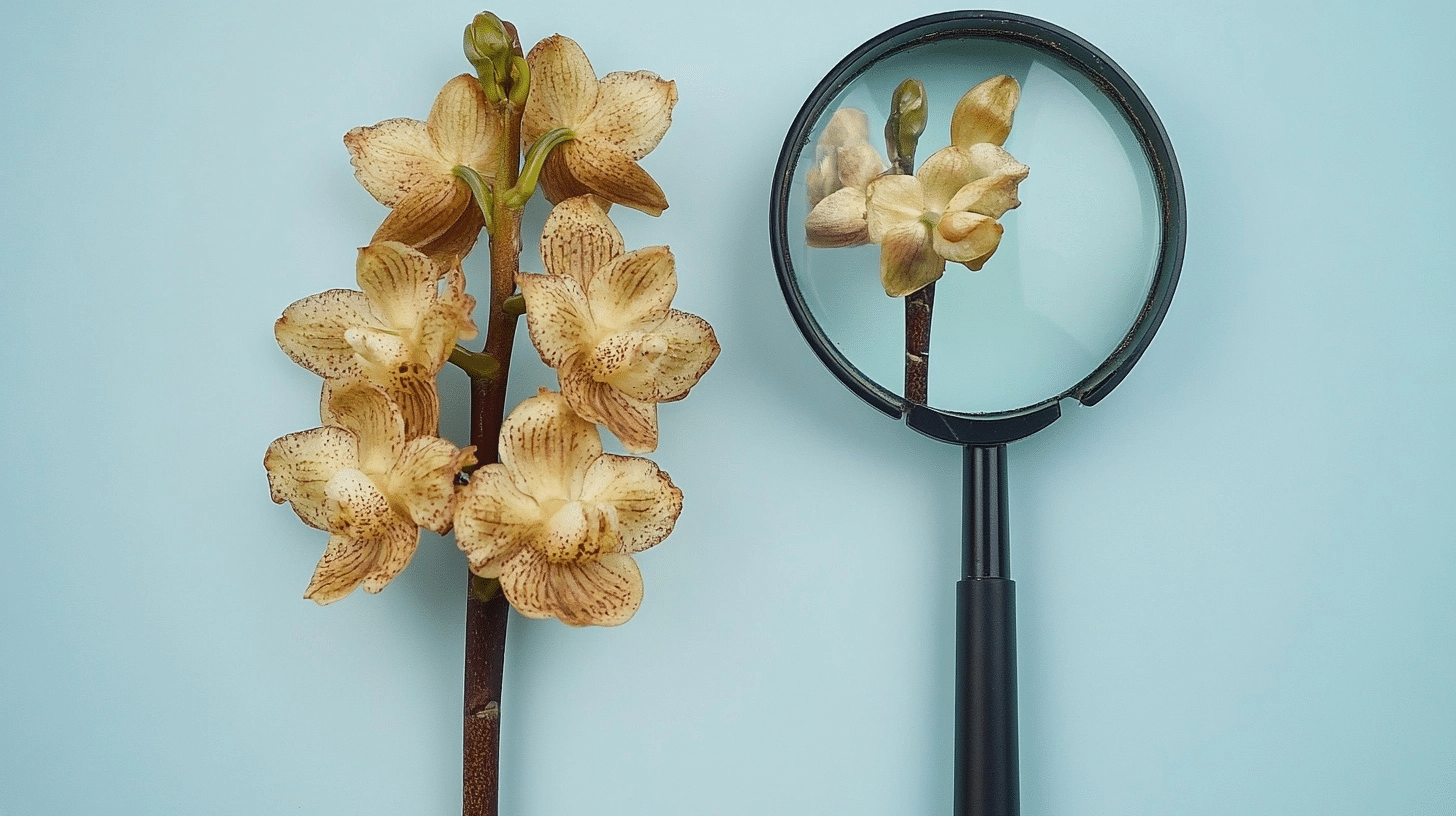
In my opinion, finding why your orchid stem is turning brown takes a bit of detective work. You need to look at your plant with careful eyes and notice small details. Here’s how to check your orchid from top to bottom.
Start with a close look at the brown areas. Touch them gently with your finger. Are they soft and wet or dry and crispy?
Wet brown spots often mean too much water, while dry spots could mean not enough.
Check your watering routine:
- How often do you water?
- Does water drain fully from the pot?
- Is the potting mix always damp?
- Do you let the plant dry between waterings?
Look at where your orchid lives in your home:
- Is it near a heater or air conditioner?
- Does it get direct sun for hours?
- Is the room very dry?
- Are there cold drafts from windows?
Check the roots by gently lifting the plant:
- Green or white roots = healthy
- Brown or black roots = rotting
- Dry, shriveled roots = too dry
Also, pay attention to when this started. Did you move the plant? Change your care routine? The timing gives important clues about what went wrong. Take photos of your plant over a few days to see if the brown spots grow or stay the same size.
What to Do When You Spot a Brown Stem?
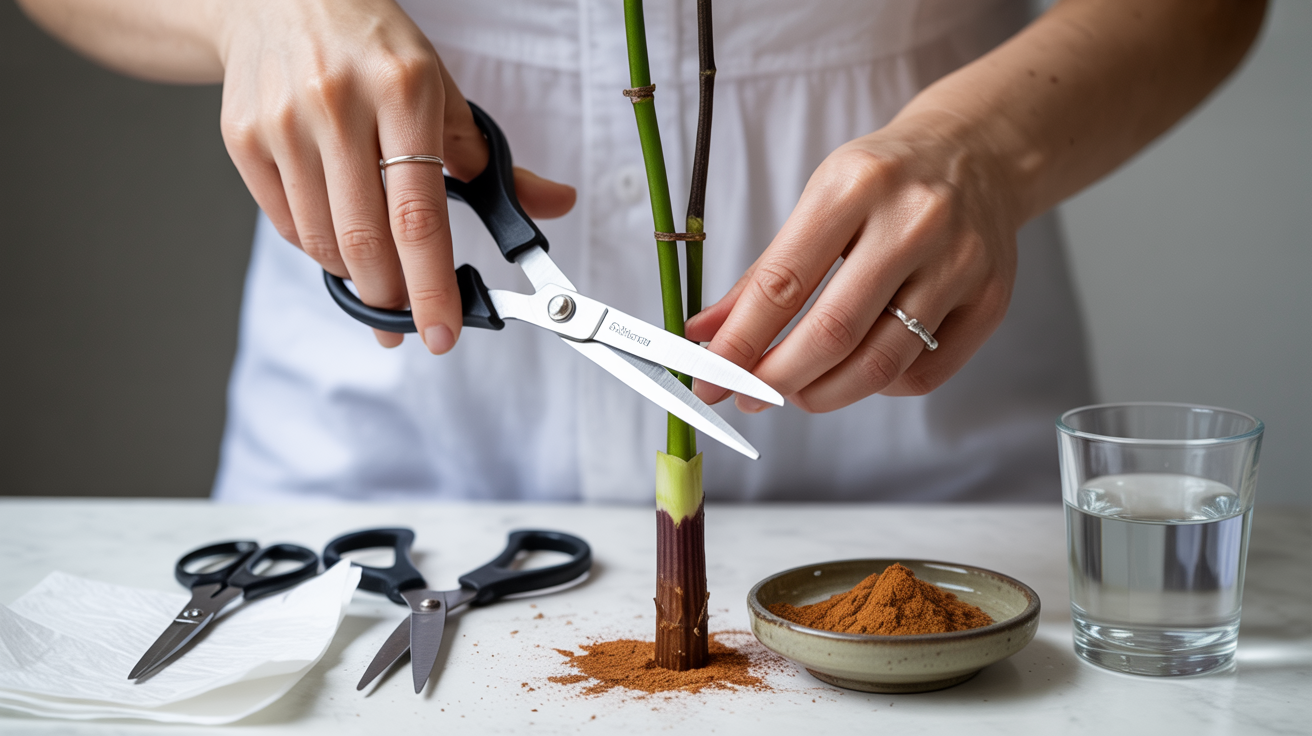
Finding a brown stem on your orchid calls for quick action, but don’t worry, most plants can recover with proper care.
When you spot this problem, pause your watering routine immediately, as excess moisture is often the culprit. Move your plant to a spot with bright but indirect light while you assess the damage.
Check the stem closely – if it feels soft or mushy, you’ll need to trim it using clean, alcohol-wiped scissors about an inch below where healthy green tissue meets the brown section.
Make an angled cut for better healing, then sprinkle cinnamon powder on the fresh wound to create a natural seal and deter pests. Give your orchid a break from fertilizer for at least two weeks to allow healing time.
Examine the roots as well; brown or mushy roots may signal that repotting in fresh medium is necessary. Throughout recovery, keep your plant in a warm location without drafts.
Feeding Your Orchid Properly
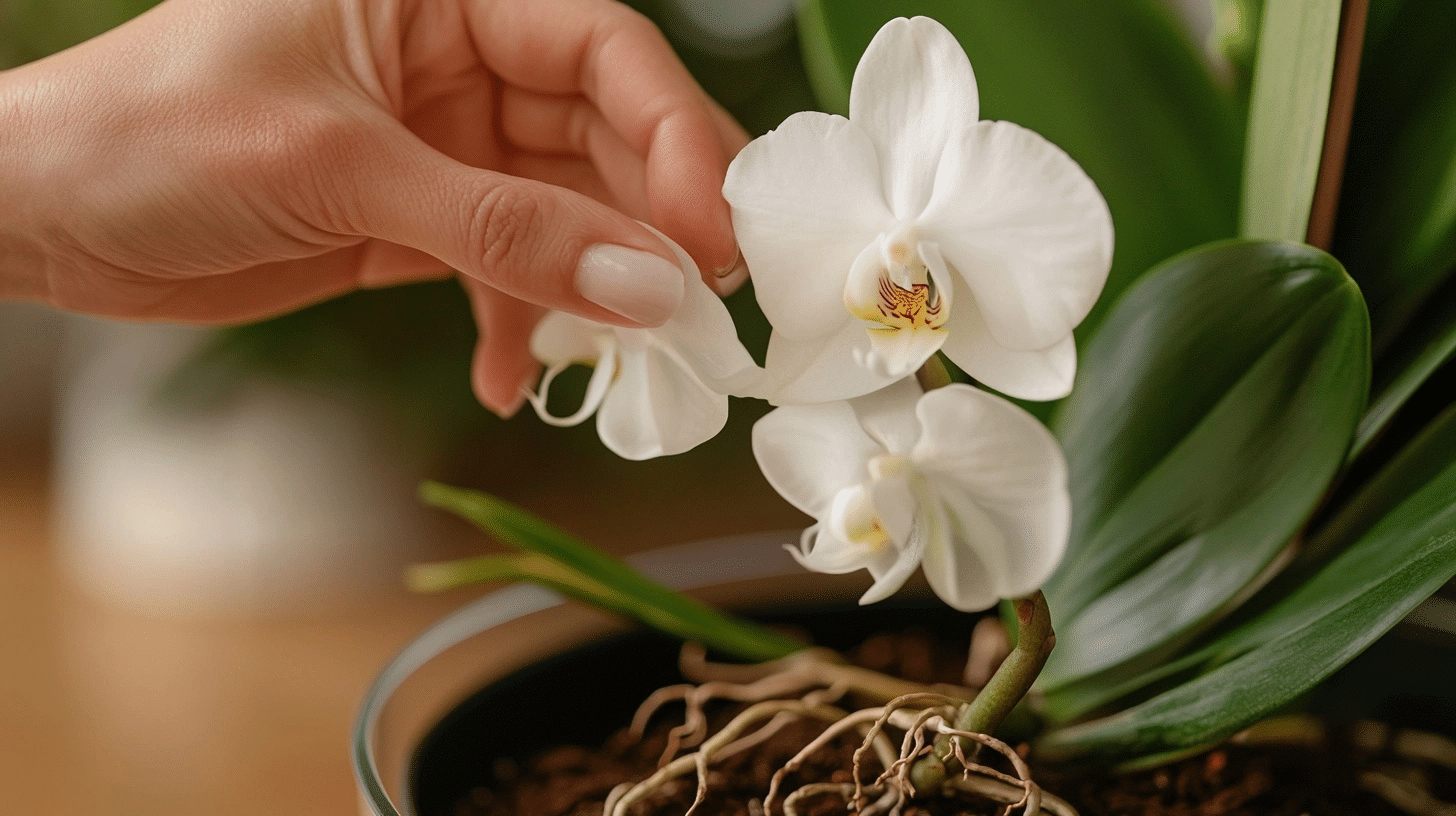
Feeding your orchid the right way can help stop stems from turning brown. I have seen such plants owners who give too much or too little food, which stresses the plant. The trick is to find the sweet spot that keeps your orchid happy without causing harm to the stems.
- Use orchid-specific plant food at 1/4 the strength listed on the package
- Feed only when your orchid is actively growing new leaves or roots
- Stop feeding completely when you see brown stems until the issue is fixed
- Apply food after watering, never on dry roots
- Feed once a month during the growing season (spring/summer)
- Cut back to once every two months in fall and winter
- Watch for white crust on the potting mix – a sign of too much food
- Flush the pot with plain water monthly to wash away built-up salts
- Skip feeding for one month if leaves start to look dark green and floppy
- Use rainwater or filtered water to mix with plant food when possible
Wrapping It Up
Looking after an orchid with a brown stem doesn’t need to be hard.
With the steps we’ve covered, you can spot problems early when your orchid stem turning brown first appears and take quick action to save your plant.
What should you do next?
Take a good look at your orchid today. Check for signs of the orchid stem turning brown and follow our diagnosis steps. Cut away any unhealthy parts and adjust your care routine based on what you find.
Do you have questions about your specific orchid? Comment below with a photo, and I’ll help you figure out what’s happening with your plant.


